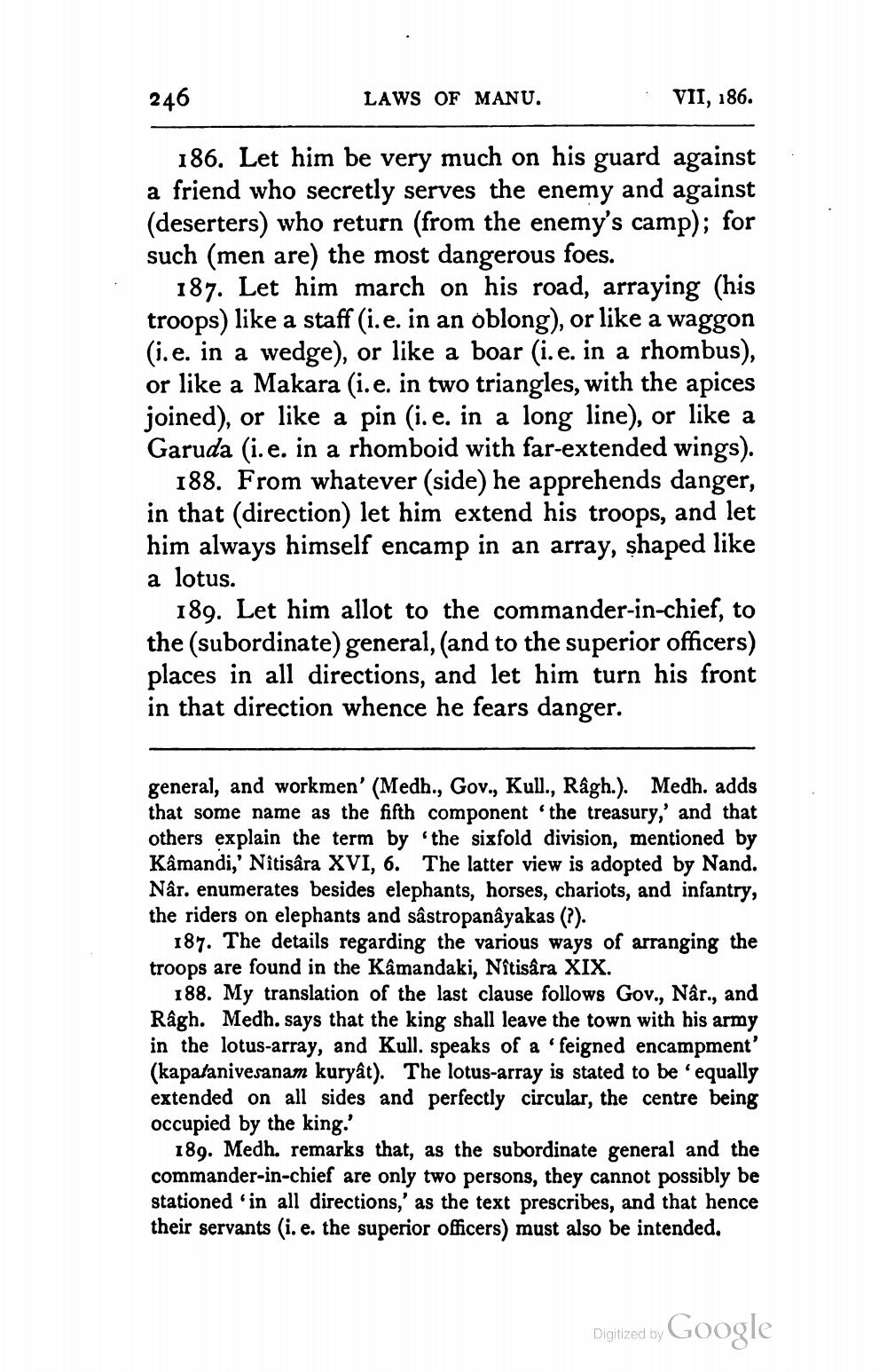________________
246
LAWS OF MANU.
VII, 186.
186. Let him be very much on his guard against a friend who secretly serves the enemy and against (deserters) who return (from the enemy's camp); for such (men are) the most dangerous foes.
187. Let him march on his road, arraying (his troops) like a staff (i.e. in an oblong), or like a waggon (i.e. in a wedge), or like a boar (i.e. in a rhombus), or like a Makara (i.e. in two triangles, with the apices joined), or like a pin (i.e, in a long line), or like a Garuda (i.e. in a rhomboid with far-extended wings).
188. From whatever (side) he apprehends danger, in that (direction) let him extend his troops, and let him always himself encamp in an array, shaped like a lotus.
189. Let him allot to the commander-in-chief, to the (subordinate) general, (and to the superior officers) places in all directions, and let him turn his front in that direction whence he fears danger.
general, and workmen' (Medh., Gov., Kull., Râgh.). Medh. adds that some name as the fifth component 'the treasury,' and that others explain the term by the sixfold division, mentioned by Kamandi,' Nitisara XVI, 6. The latter view is adopted by Nand. Når. enumerates besides elephants, horses, chariots, and infantry, the riders on elephants and sâstropanayakas (?).
187. The details regarding the various ways of arranging the troops are found in the Kamandaki, Nîtisara XIX.
188. My translation of the last clause follows Gov., Nár., and Râgh. Medh. says that the king shall leave the town with his army in the lotus-array, and Kull. speaks of a 'feigned encampment' (kapatanivesanam kuryât). The lotus-array is stated to be 'equally extended on all sides and perfectly circular, the centre being occupied by the king.'
189. Medh. remarks that, as the subordinate general and the commander-in-chief are only two persons, they cannot possibly be stationed in all directions,' as the text prescribes, and that hence their servants (i. e. the superior officers) must also be intended.
Digitized by Google




